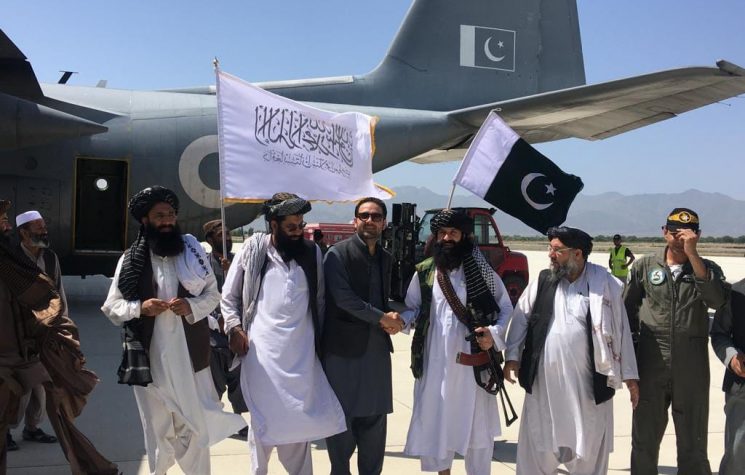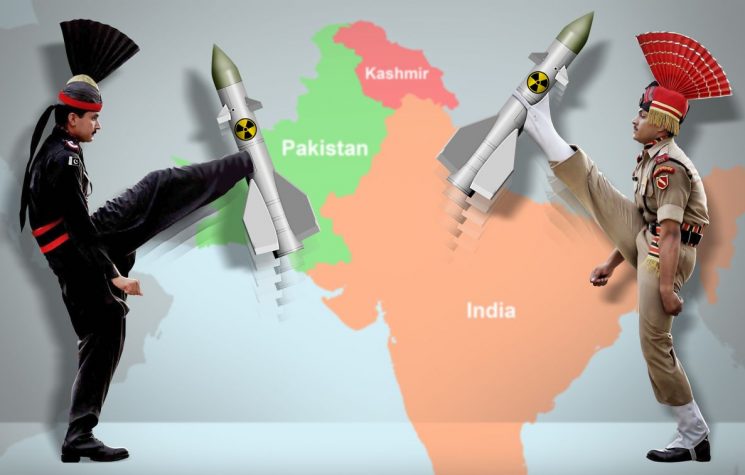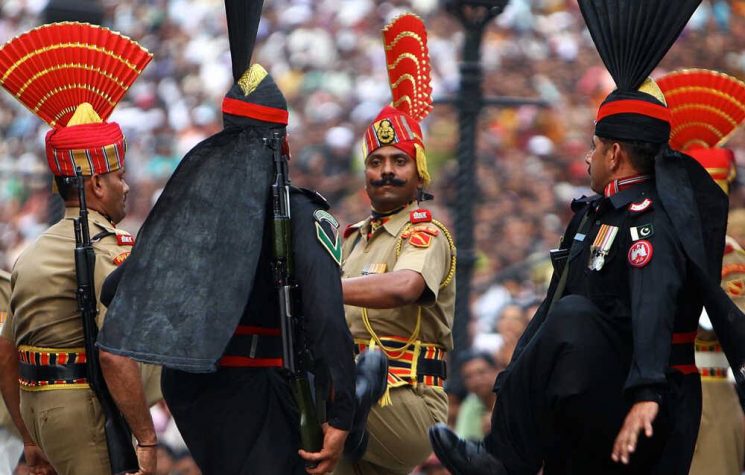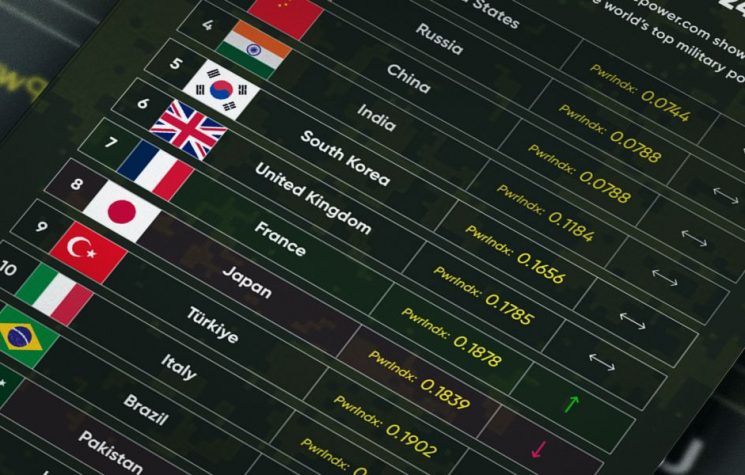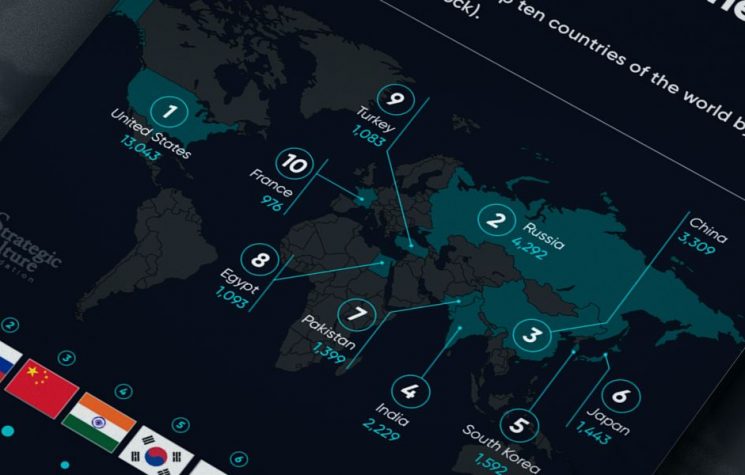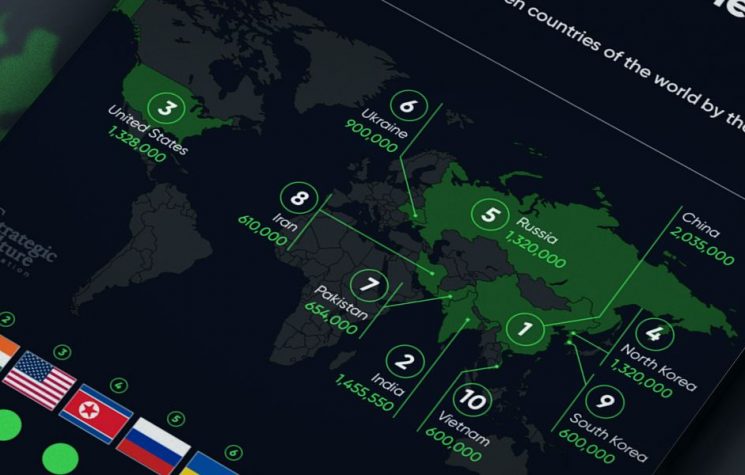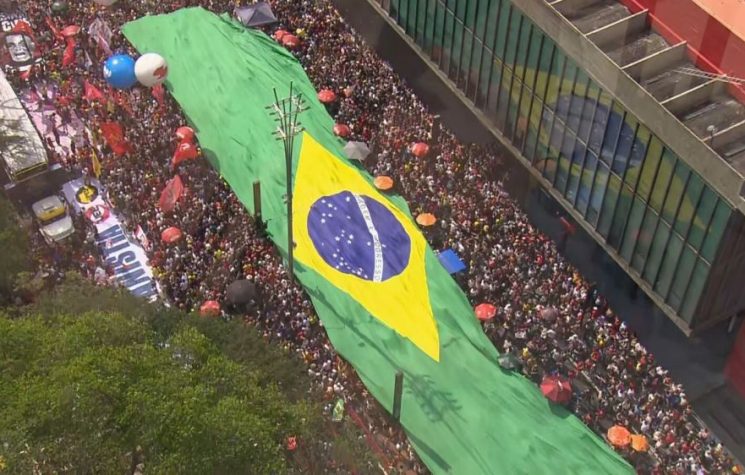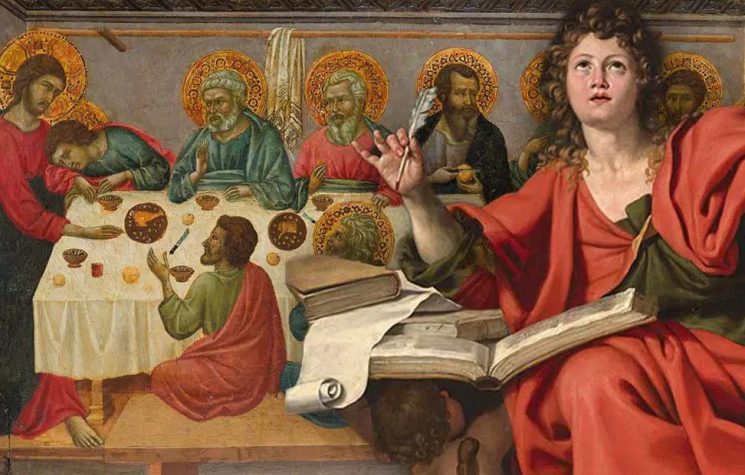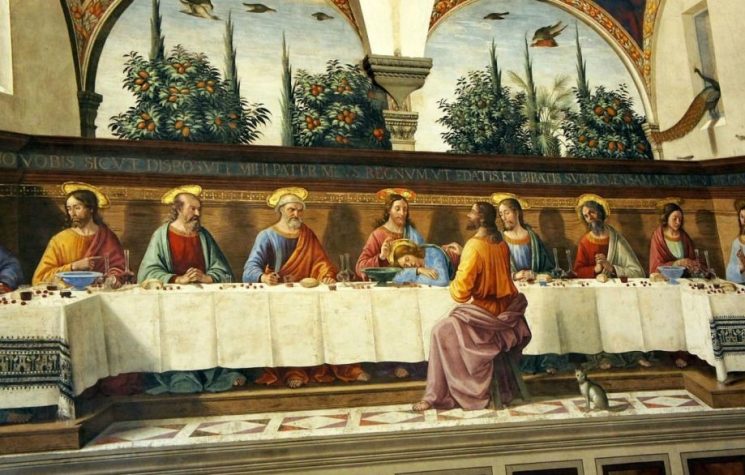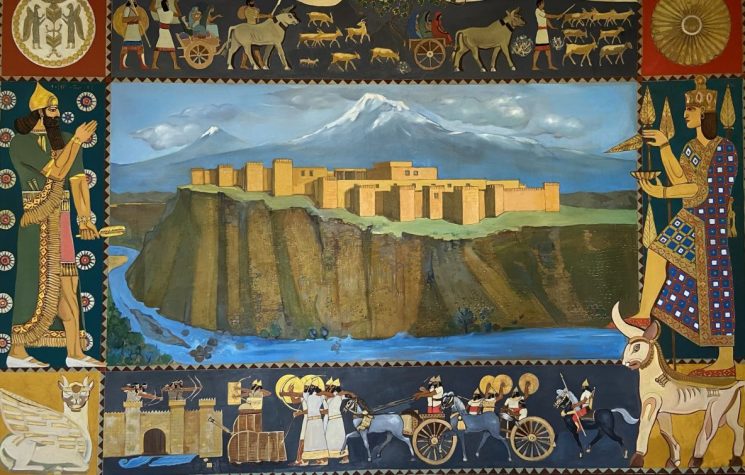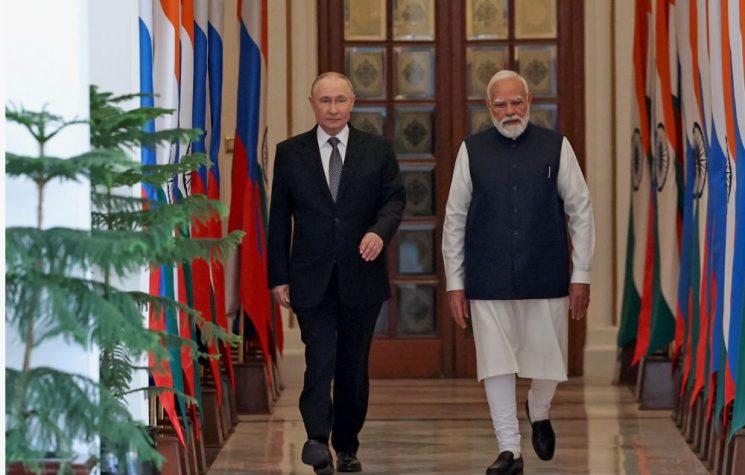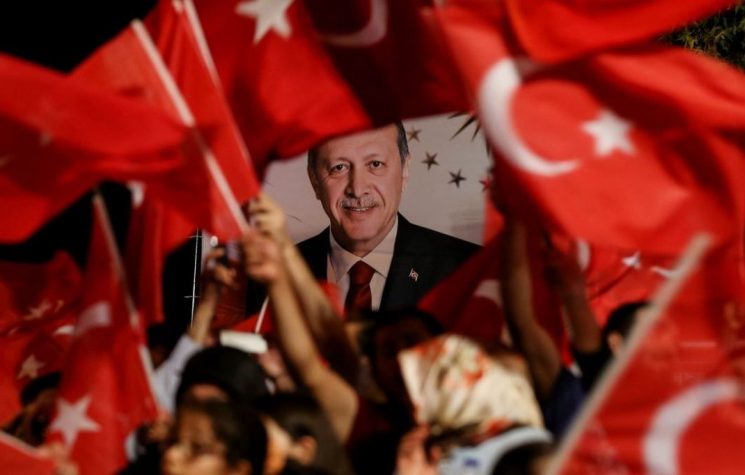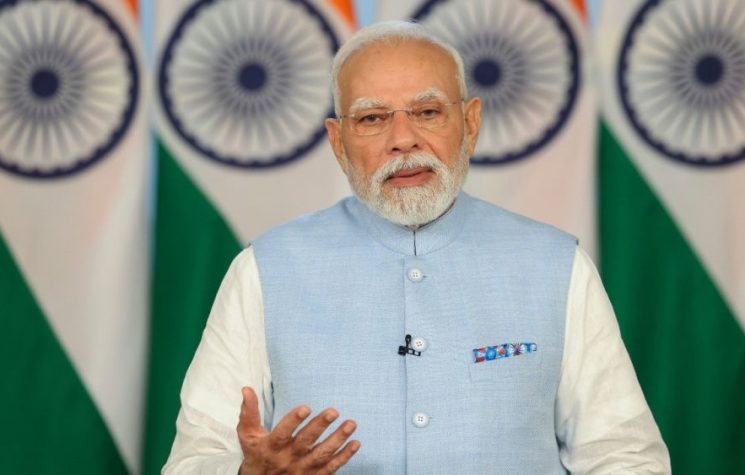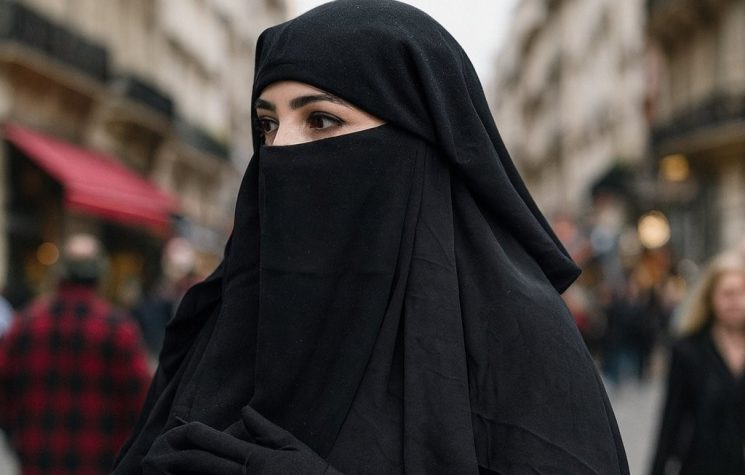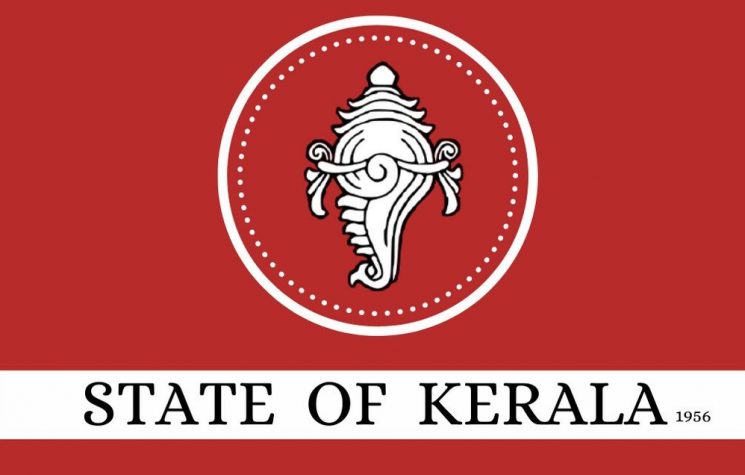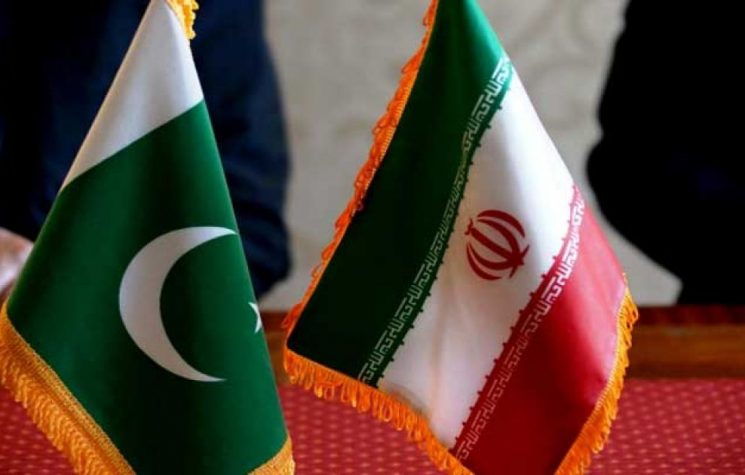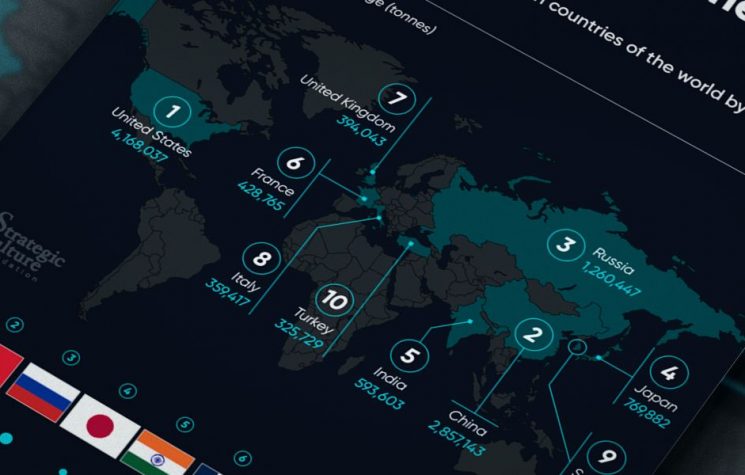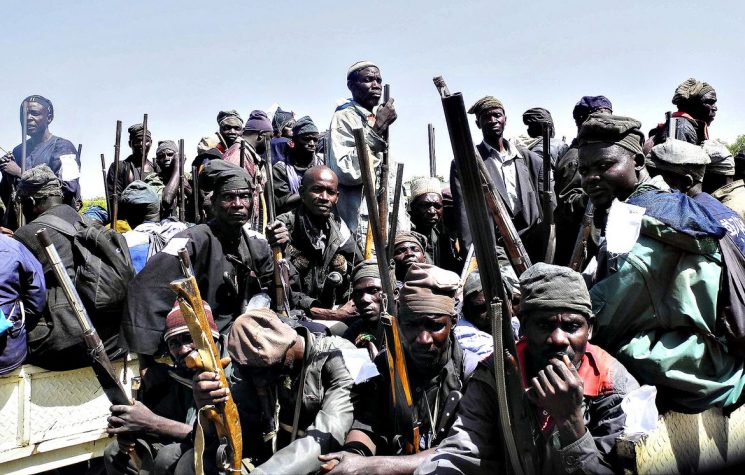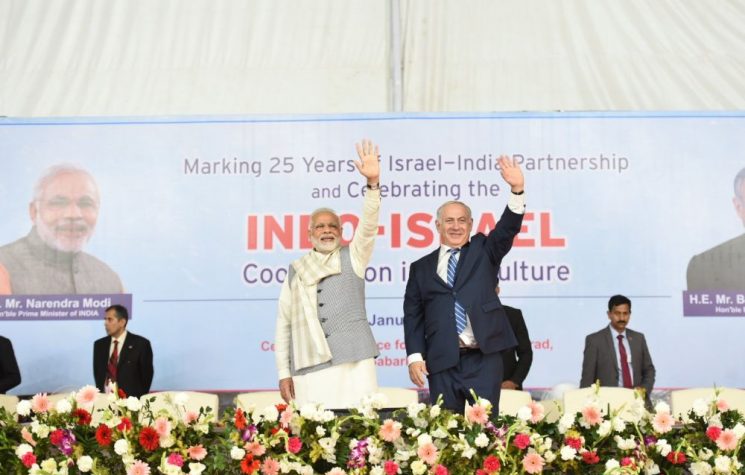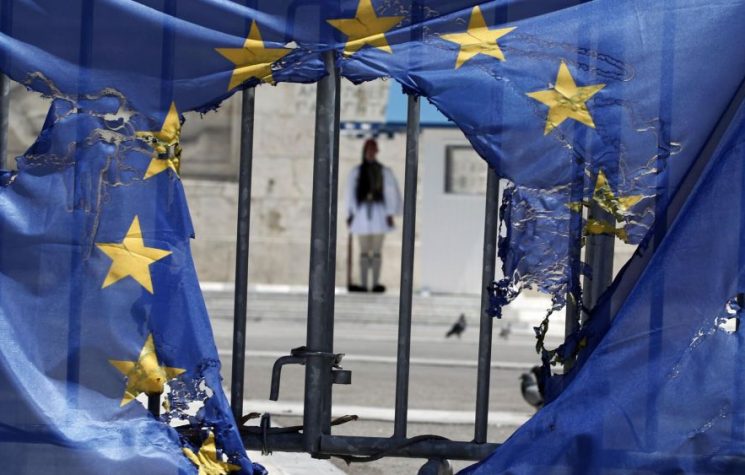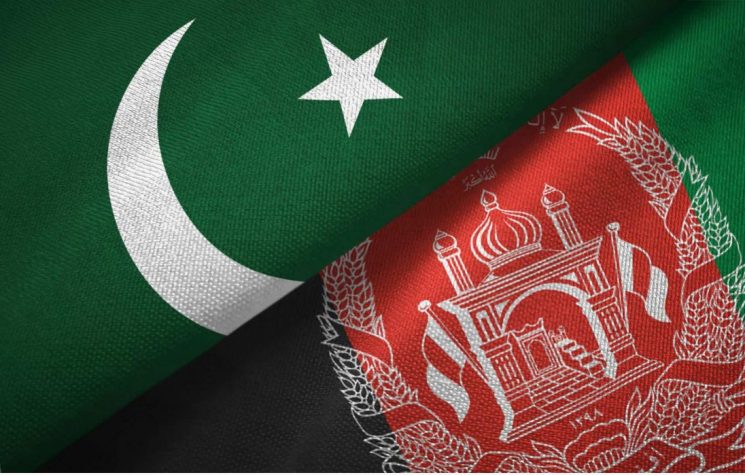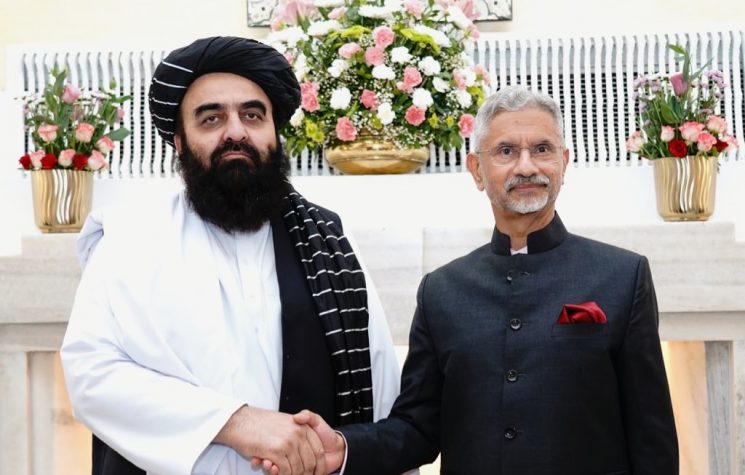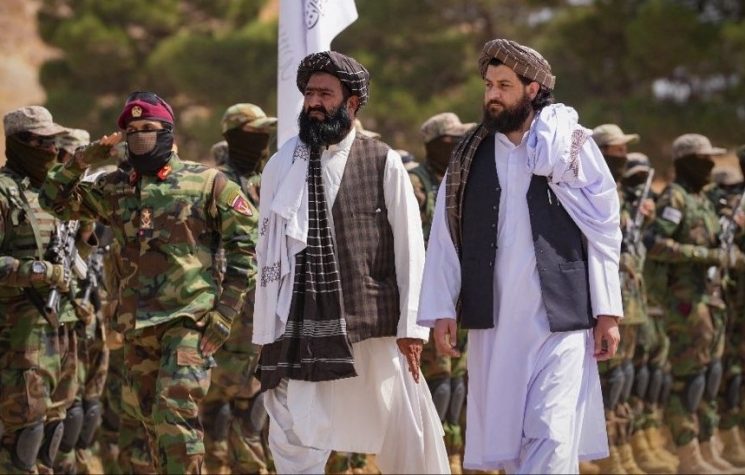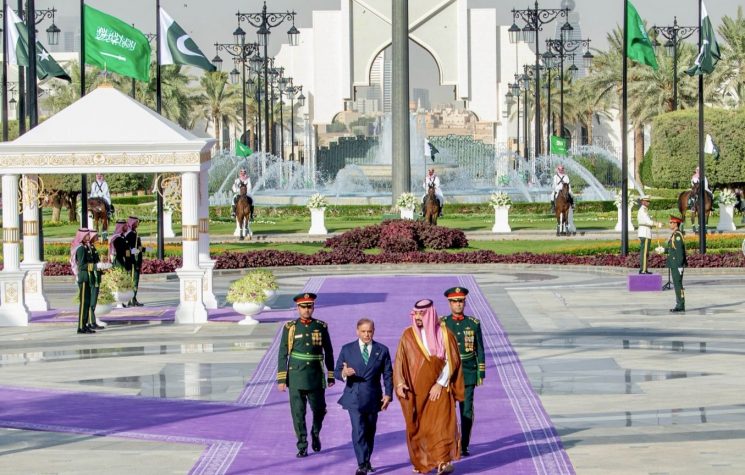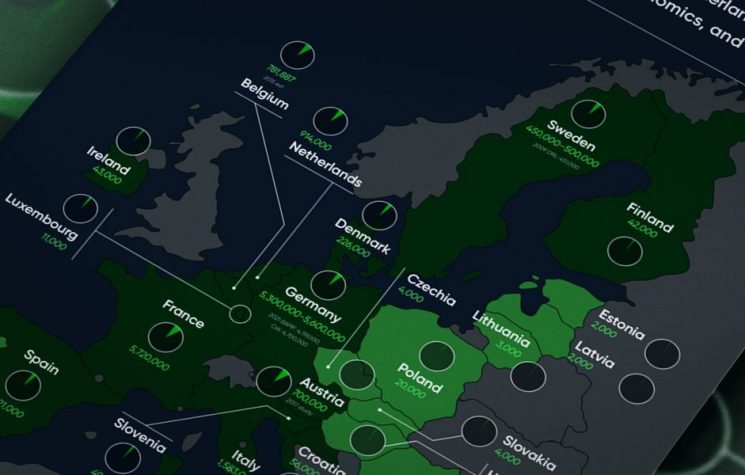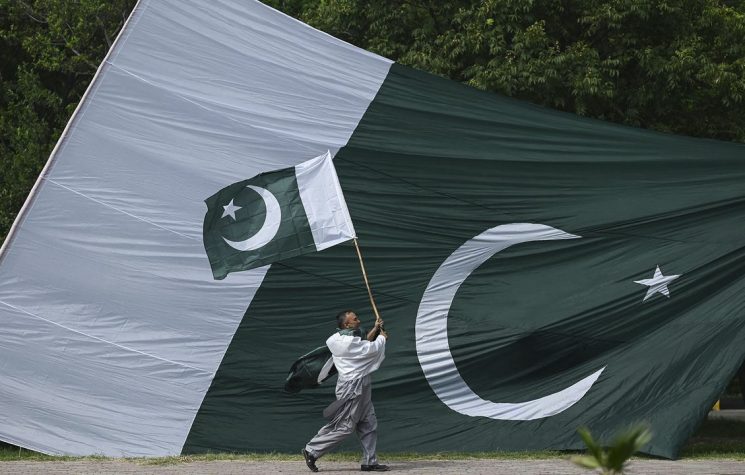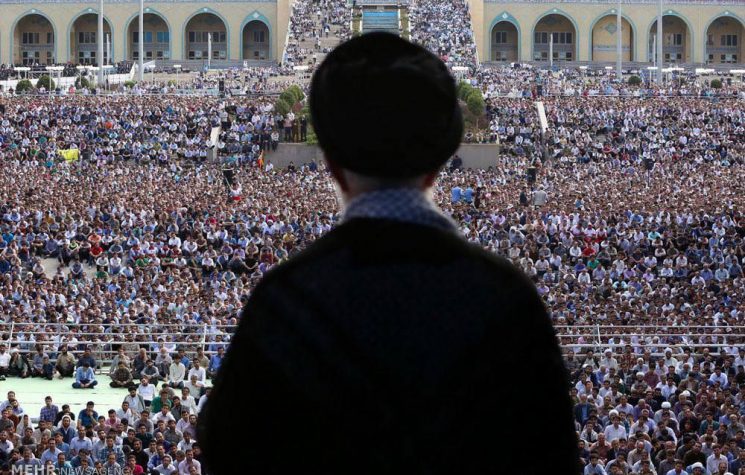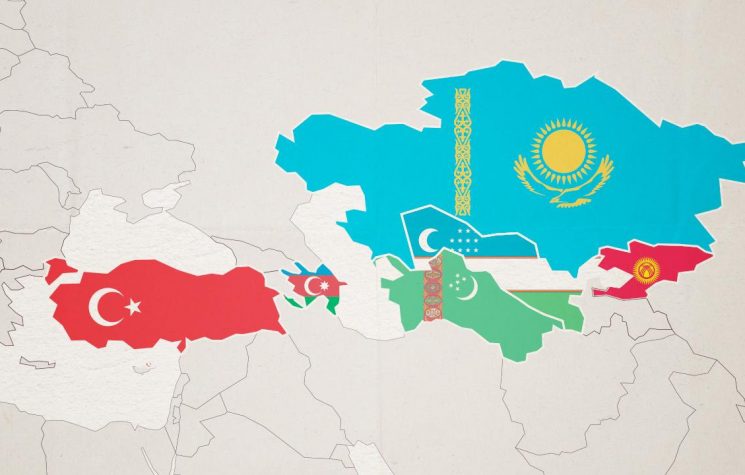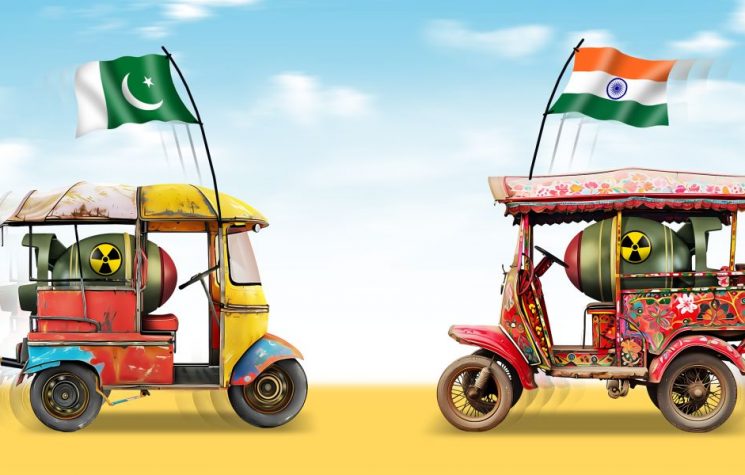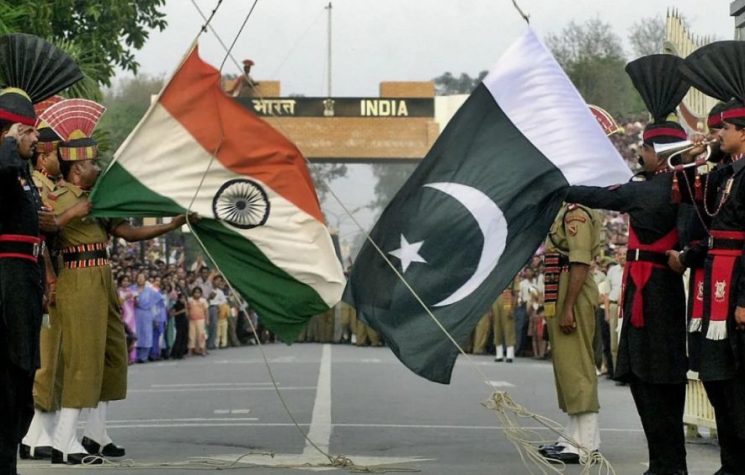Indian Hindu nationalist Prime Minister Narendra Modi and various Muslim extremist political leaders of Pakistan represent the sum of all fears expressed by leaders of princely states and their governments at the dawn of India and Pakistan in the late 1940s. Secular political leaders, including the Indian National Congress (INC) leader Jawaharlal Nehru and All-India Muslim League leader Mohammed Ali Jinnah, claimed there was nothing to worry about since both majority Hindu India and majority Muslim Pakistan would be secular republics governed by leaders committed to democratic rule, not by dictates from Hindu nationalists or Muslim sectarians.
As British India began moving toward independence after World War II, there were those in Britain and on the Indian sub-continent who argued that Britain had established international treaties with the various princely states and that Britain, by having overall responsibility for the defense and foreign affairs of these states, could not automatically transfer that role to the newly-independent Dominions of Hindustan and Pakistan. However, war-weary Britain was in no mood to continue to militarily protect these monarchical protectorates. The British government, in a move that continues to have ramifications in Kashmir and northeastern India, transferred control over the princely protectorates to the new dominions of India and Pakistan.
Nehru and the INC argued that granting independence to the individual Indian princely states would lead to the “Balkanization” of India. However, why should the Indian sub-continent have been any different than Africa? After all, Africa saw the emergence of small independent kingdoms in Lesotho, Rwanda, Burundi, Swaziland, and Zanzibar. In the 1930s, Indian independence leader Mahatma Mohandas K. Gandhi was quite content with the prospect that forward-thinking democratically-inclined royal states could rule themselves. However, as the INC began subscribing to the socialist tendency within its ranks, the princely states were put on notice that they would be forced to join an Indian federation with the same degree of autonomy they enjoyed within British India.
The INC convinced the post-war British viceroy, Viscount Mountbatten, that the partition of the sub-continent between India and Pakistan should be the last partition into independent states. It also helped the cause of an all-inclusive Indian union that Nehru had another line of communication to Mountbatten via Edwina Mountbatten, the viceroy’s wife. It was no secret that Nehru had been engaged in an ongoing affair with the Lady Mountbatten.
The rise to power in a united India of Hindu nationalist leaders like Modi was the nightmare of the leaders of the royal states of India. Modi’s political ascendancy to prime minister was fueled by anti-Muslim agitation he promoted among radical Hindus in his native Gujarat, where he served as chief minister prior to heading the Indian government. Some Indian princely states favored remaining totally independent of either India or Pakistan. Others favored forming a union of princely states tethered neither to India nor Pakistan. Twenty-two such states, including Gwalior and Indore, formed the Malwa Union.
Where Muslim rulers governed, Hindu extremists, the ideological forbearers of Modi and his Bharatiya Janata Party (BJP) – which adheres to Hindu rights and a liberalized free-market economy stance – charged that Muslim leaders were nothing more than agents of Pakistan. Muslim leaders like Sir Hamidullah Khan, the Nawab of Bhopal, who fought alongside British forces in North Africa’s Battles of Keren and El Alamein, was fearful of his state’s domination by Hindu nationalists, some of whom, like Subhas Chandra Bose and his followers, were allied with Nazi Germany, Fascist Italy, and Imperial Japan during the war.
In homage to the Indian pro-Nazis and pro-Japanese Hindus, Modi has been involved in a major project to rehabilitate Bose as a national hero of India. Modi has also praised Donald Trump, the closest the United States has seen to a fascist president throughout its entire history.
It appears that the fears of Sir Hamidullah Khan about Bhopal, long a center of Buddhist culture, being ruled by a Hindu nationalist India ultimately proved to be warranted. The Bhopal monarchy was abolished on June 1, 1949 when it became the State of Bhopal ruled by an Indian bureaucrat appointed by the president of India. In 1956, Bhopal lost its identity when it was merged with Madhya Bharat state. In 1984, Bhopal was the scene of an horrific Union Carbide chemical disaster that killed as many as 16,000 and injured at least 558,000. Unregulated actions of corporations, foreign and domestic, is a major guiding principle of Modi’s BJP.
Some princely states, tiny Cochin, for example, maintained a Cabinet answerable to an elected legislature and Indore had been heading in that same direction. The state of Baroda had instituted social legislation that was superior to that being proposed by either the INC or Muslim League. Baroda, Bikaner, and Rewa had functioning prime ministers answerable to democratic legislative assemblies. Fifteen of the principalities maintained their own postal systems. Others had their own coinage. The Gaekwar of Baroda was one of the world’s wealthiest men.
Popular sentiment against joining India was also strong in Hyderabad, governed by the Nizam, ruled by Nizam Osman Ali Khan, and Travancore, ruled by a Maharajah. The Prime Minister of Travancore, Sir C.P. Ramaswamy Ayer, declared that Travancore intended to become independent of both Britain and India, regardless of the pressure applied by the pro-INC Travancore State Congress. In 1948, the Nizam of Hyderabad, a Muslim and a close ally of Britain in World War II, appealed to both the United Nations and the International Court of Justice to save his nation from an imminent Indian invasion. Hyderabad’s case had the support of Pakistan, Argentina, and Egypt. The appeal was not successful. On September 13, 1948, Indian forces invaded Hyderabad in Operation Polo. The Indians met little resistance, Prime Minister Mir Laiq Ali was arrested by the Indian troops, and the Nizam was forced to sign an agreement that left him as head of state of what became an Indian constituent state. The Nizam was also forced to repudiate his appeals to the UN and International Court of Justice.
Indian troops put down by force a revolt of the Hindu Jat people of the princely state of Bharatpur, who did not want to be merged with the states of Alwar, Dholpur, and Karauli into the United State of Mataya.
In 1943, Leopold Amery, the British Secretary of State for India, told an audience at London’s Overseas Club, at which Maharajah Jam Sahib of Nawanagar was also a speaker, that the princely rulers of India were “not merely, as is sometimes suggested, museum pieces reproducing the splendor and chivalry and also perhaps the casualness of the Middle Ages . . . They are responsible rulers of territories, some of them equal in population and extent to major European nations, and their responsibilities are by no means small. Their primary responsibility is the good governance of their own people . . .”
Two rulers of the Rajput border states in western India, Maharajah Hanwant Singh of Jodphur and Maharawal Jawahir Singh of Jaisalmer – their nations located between the newly-partitioned India and Pakistan – saw some utility in having their kingdoms remain as neutral buffer states between India and Pakistan. Muhammad Mahabat Khanji III, the Muslim Nawab of Junagadh, a primarily Hindu border state, opted to join Pakistan with the support of his dewan or prime minister, Shah Nawaz Bhutto. However, the Hindu majority revolted and in a plebiscite the people opted to join India. The Nawab fled to Pakistan. Dewan Bhutto’s son, Zulfiqar Ali Bhutto, became prime minister of Pakistan. Zulfiqar was later executed by a military tribunal. His daughter, Benazir Bhutto, also became prime minister. She was later assassinated. The Muslim Nawab of Tonk, the Muslim leader of a Rajputana princely state, opted to merge with India.
The failure of the British to grant independence to the Sikh states of Patiala, Kapurthala, Jind, Faridkot, Malerkotla, Nalagarh, Kalsia, and Nabha as the Phulkian Union would later serve as a point of contention that Sikhs were not given the same independence were the Hindus and Muslims upon partition of India. There was mild resistance to joining either Hindustan or Pakistan from states like Bikaner and Mysore, as well as the Punjab Hill States. Similarly, the large Christian minorities of Travancore and Cochin feared the ultimate direction of Hindu rule. Later, that would be manifested in deadly attacks by Hindu radicals on Christian churches.
The princely state of Jammu and Kashmir, ruled by a Muslim Maharajah, opted to accede to India with guarantees of special autonomy guaranteed by the Indian Constitution. Although that guarantee was recognized by all previous Indian prime ministers, INC and BJP, alike, Modi abrogated it and turned the state into an Indian union territory, abolishing the state government in the process. Had India and Pakistan permitted the continued sovereignty of the western border states, they could have served as safety valves between the two nuclear-armed nations. However, even the Himalayan border states separating India and China – Bhutan, Sikkim, Ladakh, and Nepal – have not fared very well. India invaded and annexed the Kingdom of Sikkim in 1975 and Nepal, which became a federal republic after abolishing its monarchy, and the Kingdom of Bhutan remain wary buffer states on guard against Indian expansionism. As part of Modi’s abrogation of Jammu and Kashmir’s special status, the largely Buddhist region of Ladakh was made a union territory.
Both India and Pakistan underestimated the determination of royal leaders in the remote areas of the northwestern part of British India to be left alone by Britain, India, and Pakistan. Even prior to the outbreak of World War II, the Faquir of Alingar and the Nawab of Dir fought relentlessly against British land and air forces. This initial resentment by the tribal leaders of the Northwest Frontier Hindu Kush region, including the leaders of the princely states of Amb, Chitral, and Dir, as well as the Wali of Swat, to accede to Pakistani demands would continue to inflame the political-religious situation in modern times, such as when the region became host to various Islamist extremists, including Al Qaeda.
Like India, Pakistan also dissolved the sovereignty of its ten princely states even though Jinnah had supported the princely states opting for independence upon partition of India. The first state to experience pressure was the largest, Bahawalpur, which saw its entire government, including the Amir, who claimed direct descendance from the Prophet Muhammad, dismissed by the central government of Pakistan. The dissolution of the princely states of Khairpur, Las Bela, Kharan, Makran, and Khanate of Kalat soon followed.
Many of the states of northeast India, where local inhabitants joined British forces in repelling the Japanese invasion in the war, felt slighted when their legitimate demands for independence were ignored by Mountbatten and the British Colonial Office. These states included Manipur, Tripura, Nagalim, and Cooch Behar.
Successive Indian and Pakistani governments moved to obliterate any vestiges of the princely states. Small states, including Bilbari and its population of 27, were relegated to the history books in short order. In 1961, India moved to arrest and strip the Maharajah of Bastar of his royal titles. Maharajah Gajapati Pravin Chandra Bhanj Deo was found to have been in contact with the rulers of other former princely states and attempted to form an alliance to demand the restoration of their principalities. The people of Bastar were aboriginal tribesman with extreme loyalty to their maharajah.
One world leader saw some unfairness in what Nehru and his Congress Party had done to the princely rulers. In March 1962, the First Lady of the United States, Jacqueline Kennedy, wife of President John F. Kennedy, made it a point to spend part of her visit to India with five Indian princes and two princesses representing the former princely states of Mewar, Bikaner, Kotah, and Udaipur. The meetings represented JFK’s pointed jab at Nehru, who did not mask his dislike of Indian royalty.
One thing that was not endemic among the rulers of the princely states was religious extremism. Unfortunately, the same cannot be said of the current prime minister of India and his most avid supporters and the radical Islamist political leaders of Pakistan.








